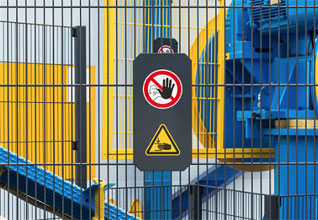

June 12 2019

As an OEM of industrial machinery for a wide variety of plastics processing, web handling, and slitting applications, we are often put in a difficult position of responding to requests from customers for upgrades to legacy machines while navigating a minefield of product liability concerns. This can be frustrating for customers who view the scope of their request as being a “simple” or “minor” upgrade or modification, whereas from the OEM’s viewpoint, the scope of the project, once fully assessed, typically becomes much broader. When a customer then receives a proposal with costs well beyond what they deem reasonable for the scope of work they are envisioning or are surprised by a refusal from the OEM to even provide a proposal, it can lead to the misperception of the OEM not wanting to work with a customer. Most of the time, that simply isn’t the case.
We have customers who run the same product on production lines for years or even decades. We also have customers whose product portfolios are more dynamic. With changing products come changing requirements for process equipment. Even if the products don’t change, mechanical and electrical components become obsolete with time and often can no longer simply be replaced by maintenance personnel. Drives and control systems have very definite lifespans after which supporting them becomes problematic and at which point machine owners often desire more significant upgrades to the latest generations. These are some of the more common reasons processors and converters request upgrades to their legacy equipment.
When OEMs design and build a machine – whether highly customized or based on a standard model – the safety standards in effect at that point in time govern many aspects of the design, the most critical being operator-machine interfaces. Over time, safety standards become stricter, sometimes taking advantage of new technologies that weren’t previously available – e.g. from relatively simple physical guards of the past to sophisticated programmable laser scanners of today.
The longer time passes, the more likely it is that safety requirements for any given type of processing equipment will have evolved significantly. While a repair or upgrade may appear to be relatively simple, it may not be possible for an OEM to tackle the limited scope without exposing themselves to significant legal liability unless they also address the changes in the safety requirements. Sometimes, there simply is no practical way to do so, and the OEM must decline the work outright.
We are all aware of the litigious nature of our society, especially here in the USA. We can’t drive for more than a few miles on most major interstate highways without passing a billboard for a personal injury attorney or we’re bombarded by similar messages in commercials on our local TV and radio stations. While one can argue whether this has been a benefit to society as a whole – a lot of dangerous products have been eliminated and/or made much safer as a result – it has had a significant impact on manufacturers of all types of products. OEMs are no exception.
Keep this in mind next time you request a proposal from your OEM for a “simple” upgrade or modification to your legacy production equipment. And don’t be surprised when you receive their response, or they seem reluctant to provide a proposal. Any reputable machine manufacturer will evaluate the level of engineering needed to bring a piece of equipment up to the appropriate safety standards. However, safety isn’t the only factor that an OEM will evaluate. Other factors such as the machine’s age, condition, and type could make an OEM reluctant to provide upgrades or modifications, but that can be explained in a future article.